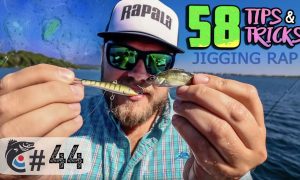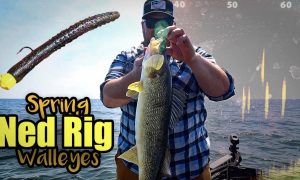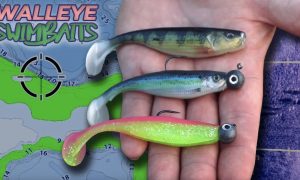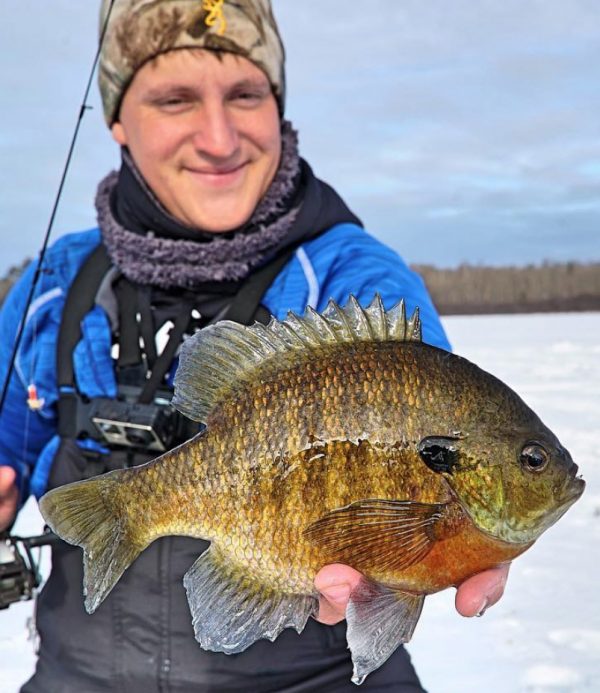 Fishing the same lakes each time out can get a bit stale…plus you’ll probably never stick that new PB (personal best) if you’re pokin’ around the same community holes day after day!
Fishing the same lakes each time out can get a bit stale…plus you’ll probably never stick that new PB (personal best) if you’re pokin’ around the same community holes day after day!
TW fam Will Stolski tracked down a couple of ice-heads who love breaking down new-to-them water — and do it frequently — to get their take on where to start….
Still not sure how he got Sam “Sobi” Sobieck on the phone…dude is ultra-busy [!] and on the road 24/7. Sobi’s a videographer/vlogger/fishin’-maniac who’s fished, well…almost everywhere…but grew up hitting central MN.
Sobi had Murray Hebert (FishNmore Outdoors) riding shotgun when Will called, who tossed in some bonus snippets as well. #DoubleWhammy
Do your homework!
With all the available mapping sources on the interwebz, there’s really no reason why you shouldn’t be doing your homework before ever drilling a hole. That extra 30 mins of research can save you a bunch of time in the long run:
> Sobi: “The first thing I look for when checking potential water is if there’s any streams/rivers that flow in or out of the lake?
> “A lot of these smaller bodies of water are shallow, so having some kind of oxygen source from rivers/streams is crucial to avoid a winter-kill scenario…which are fairly common in the areas I fish.
> “Before I even look at a contour map of the lake, I check out ‘satellite’ shots on Google Maps. On a lot of these smaller lakes, the contour maps are vague or unavailable. You can tell a lot about a lake (deeper water, shallow reefs, emergent vegetation) just by looking at satellite images.”
> “Definitely take advantage of fishery surveys done by the DNR if they’re available. Most of my fishing is done in MN, so I’m lucky to have access to a pile of data via [the free] LakeFinder tool.
> “The surveys help give me an idea of what I should expect as far as different species plus the kind of forage they’re feeding on…beats the heck out of going in blind.”
LakeFinder is probably one of the biggest not-so-secret secrets of diehard ice-heads. Can search most any lake in the state (by name, or searching the map on the mobile version) and it’ll kick out tasty info like:
1. Whether there’s a public access or not, and where it’s at.
2. Fish stocking info: when, what and how many.
3. Water clarity, quality and levels.
4. And my personal favorite…the DNR’s trap/net data.
That trap/net data (under the “Fisheries Lake Surveys” tab) breaks down the weight and length of all fish sampled by the DNR. It’s a KILLER tool for finding lakes with above-average size fish…right from your couch [zipped-mouth emoji]:
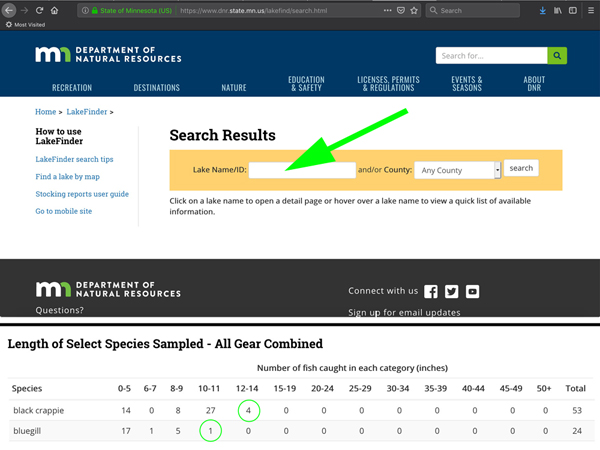
Don’t be afraid to fish lakes that sampled very few (or zero) of your target species…might not catch as many, but the ones you do could be the right ones.
Less competition for food + more breathing room, can = quicker growth rates…whereas lakes with high numbers of fish can suffer from “stunted” growth.
The first spot
Found a new lake you wanna hit…now where to start??
> Sobi: “It’s easy to jump the gun and start ripping holes, but the first thing I do is gauge the physical landscape around the water.
> “Steep banks? Probably deep-water close. Points coming off land? Odds are they extend into the lake. Little stuff like that can help eliminate water, especially if contour maps are minimal/unavailable.
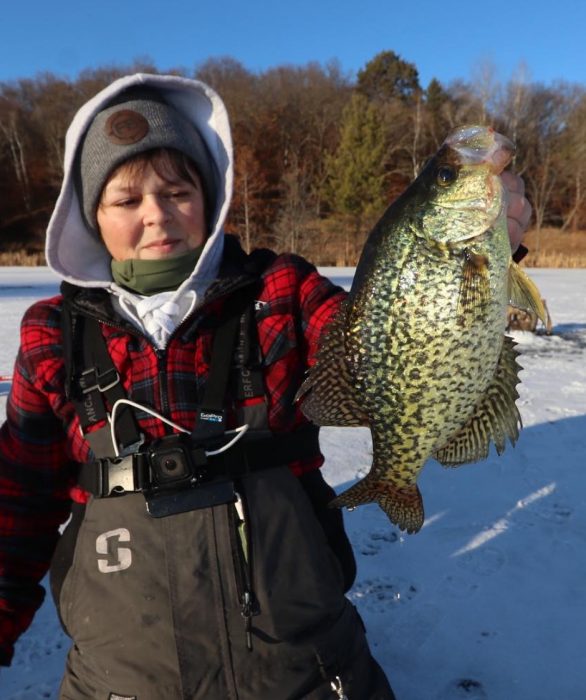 > “Start shallow then move deeper. The first thing I look for is green weeds — if you have access to an underwater camera, use it. No biggie if you don’t…throw a jacket over your head and take a peek for yourself.
> “Start shallow then move deeper. The first thing I look for is green weeds — if you have access to an underwater camera, use it. No biggie if you don’t…throw a jacket over your head and take a peek for yourself.
> “I honestly think that physically checking weed beds is the most overlooked aspect in the game…there’s so much you can learn visually: what kind of weed growth, how thick, bare patches, green or dying, etc.
> “If the good stuff is there (cabbage, coontail, or milfoil) I’ll drill a zig-zag pattern of holes both in the weeds and right on the edge. Think of it as following the outside weed-line like you would in the summer.
> “Doesn’t matter what your fishing for…everything likes to live around healthy weeds.
> “If weed growth is poor — or they have totally died off — I’ll start to drill out deeper. Not drilling the basin immediately, but looking for pinch points close to deeper water. Specifically inside turns, points and sharper breaks.”
Gear
> Sam: “Start bigger then move smaller…sounds a little backwards, but when fishing a new lake I want to find those aggressive fish and only downsize if I have to.
> “I like to start off with a 5-mm Frostbite T-Series tungsten jig for panfish. Clear water = natural colors. For darker/stained stuff I go with something that really stands out. The ‘Hulk’ color from Frostbite has a purple body with green + black accents…looks totally different than most jigs on the market.”
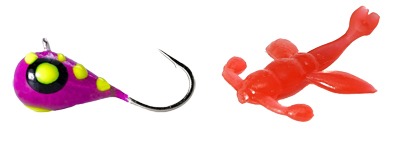
> “Always start with plastics before switching to live bait…it’s way more efficient and cold hands suck. My go-to is the Dragonfly.
> “For walleyes or pike: I’ll start with a rattlebait or jigging spoon. I like rattlebaits ‘cuz there’s no need to bait ‘em…same premise as targeting pannies, start bigger then go smaller.”
Hitting new lakes can be frustrating! Odds are you’ll strike out a lot (probably 9 times out of 10) but that next hidden gem down the road could pay off with a true jaw-dropper:

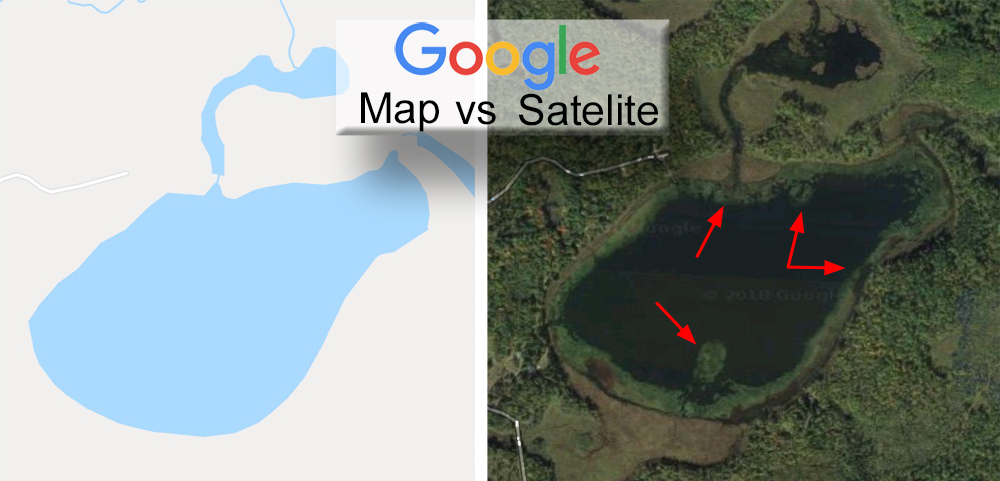
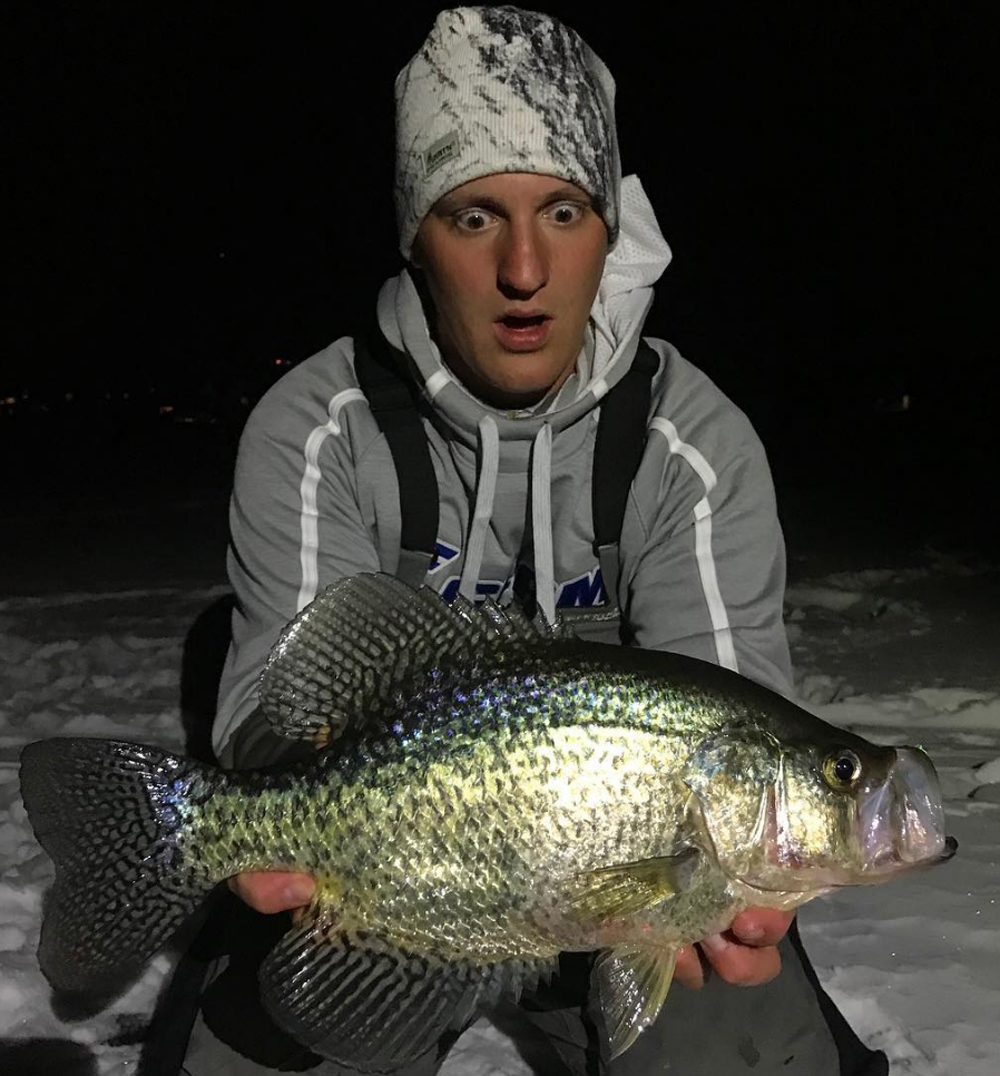


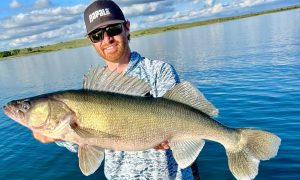

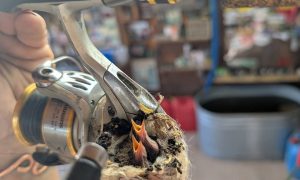

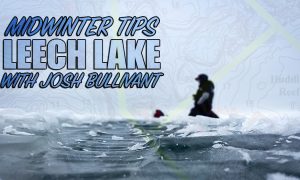

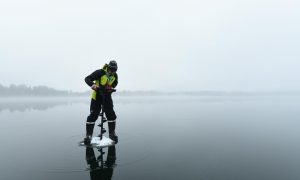



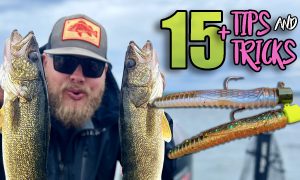

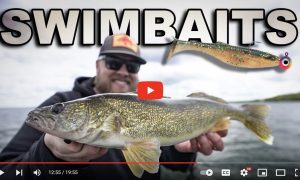

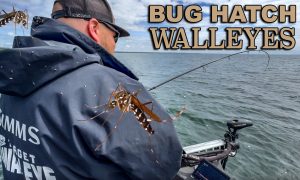

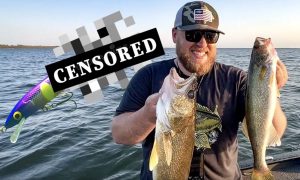

 …and...
…and...